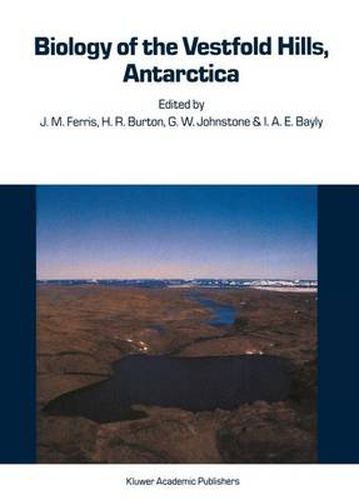Readings Newsletter
Become a Readings Member to make your shopping experience even easier.
Sign in or sign up for free!
You’re not far away from qualifying for FREE standard shipping within Australia
You’ve qualified for FREE standard shipping within Australia
The cart is loading…






This title is printed to order. This book may have been self-published. If so, we cannot guarantee the quality of the content. In the main most books will have gone through the editing process however some may not. We therefore suggest that you be aware of this before ordering this book. If in doubt check either the author or publisher’s details as we are unable to accept any returns unless they are faulty. Please contact us if you have any questions.
The present volume was conceived as a companion to ‘Antarctic Oasis: Terrestrial environments and history of the Vestfold Hills’ edited by J. Pickard and published in 1986 by Academic Press, Sydney. Pickard’s book contains accounts of the Vestfold Hills’ climate (N. A. Streten) and recent geomorphological history (D. A. Adamson & J. Pickard) which provide a valuable context for understanding their present day biology. Pickard also gives a history of human discovery and occupation of the Vest fold Hills. There is some overlap in the coverage, to the extent that both this volume and Pickard’s book describe the terrestrial flora and fauna. The reader specifically interested in the terrestrial ecosystems of the Vestfold Hills should draw from both sources. Together, these works present a broad and descriptive account of the largest truly coastal antarctic oasis: a region that holds a unique variety of opportunities for future scientific investigation. There are several tasks I wish to accomplish here, apart from expressing my sincere thanks to the many people who have contributed to the completion of this volume. I wish to briefly introduce the Vestfolds and to list some of the features that, in my opinion, make them biologically varied, and unique in the context of other coastal ice-free areas. I wish to describe the phases of biological research in this region, including the directions that have been pursued since the 1984 symposium and to comment upon the future of the Vestfold Hills.
$9.00 standard shipping within Australia
FREE standard shipping within Australia for orders over $100.00
Express & International shipping calculated at checkout
This title is printed to order. This book may have been self-published. If so, we cannot guarantee the quality of the content. In the main most books will have gone through the editing process however some may not. We therefore suggest that you be aware of this before ordering this book. If in doubt check either the author or publisher’s details as we are unable to accept any returns unless they are faulty. Please contact us if you have any questions.
The present volume was conceived as a companion to ‘Antarctic Oasis: Terrestrial environments and history of the Vestfold Hills’ edited by J. Pickard and published in 1986 by Academic Press, Sydney. Pickard’s book contains accounts of the Vestfold Hills’ climate (N. A. Streten) and recent geomorphological history (D. A. Adamson & J. Pickard) which provide a valuable context for understanding their present day biology. Pickard also gives a history of human discovery and occupation of the Vest fold Hills. There is some overlap in the coverage, to the extent that both this volume and Pickard’s book describe the terrestrial flora and fauna. The reader specifically interested in the terrestrial ecosystems of the Vestfold Hills should draw from both sources. Together, these works present a broad and descriptive account of the largest truly coastal antarctic oasis: a region that holds a unique variety of opportunities for future scientific investigation. There are several tasks I wish to accomplish here, apart from expressing my sincere thanks to the many people who have contributed to the completion of this volume. I wish to briefly introduce the Vestfolds and to list some of the features that, in my opinion, make them biologically varied, and unique in the context of other coastal ice-free areas. I wish to describe the phases of biological research in this region, including the directions that have been pursued since the 1984 symposium and to comment upon the future of the Vestfold Hills.